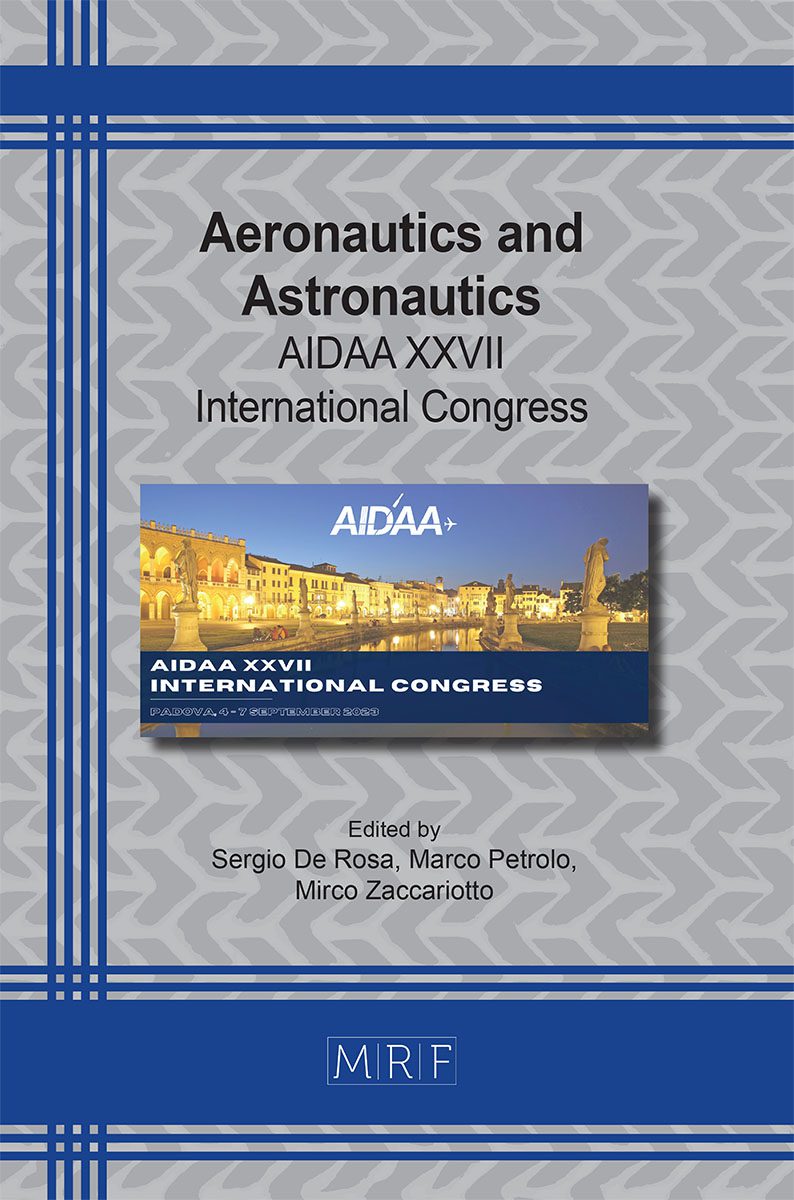High-fidelity simulation of the interaction between the wake of a descent capsule and a supersonic parachute
Luca Placco, Giulio Soldati, Alessio Aboudan, Francesca Ferri, Matteo Bernardini, Federico Dalla Barba, Francesco Picano
download PDFAbstract. The objective of the project is to analyze the unsteady dynamics of the parachute-capsule system in a supersonic airflow while descending during planetary entry. Currently, a combination of Large-Eddy Simulation and an Immersed-Boundary Method is being utilized to examine the evolving flow of a rigid supersonic parachute trailing behind a reentry capsule as it descends through the atmosphere of Mars. The flow is simulated at = 2 and = 106. A massive GPU parallelization is employed to allow a very high fidelity solution of the multiscale turbulent structures present in the flow that characterize its dynamics. We show how strong unsteady dynamics are induced by the interaction of the wake turbulent structures and the bow shock which forms in front of the supersonic decelerator. This unsteady phenomenon called ‘breathing instability’ is strictly related to the ingestion of turbulence by the parachute’s canopy and is responsible of drag variations and structure oscillations observed during previous missions and experimental campaigns. A tentative one-dimensional model of the flow time-evolving dynamics inside the canopy is proposed.
Keywords
Supersonic Parachute, Supersonic Flows, Large Eddy Simulation, Unsteady
Published online 11/1/2023, 4 pages
Copyright © 2023 by the author(s)
Published under license by Materials Research Forum LLC., Millersville PA, USA
Citation: Luca Placco, Giulio Soldati, Alessio Aboudan, Francesca Ferri, Matteo Bernardini, Federico Dalla Barba, Francesco Picano, High-fidelity simulation of the interaction between the wake of a descent capsule and a supersonic parachute, Materials Research Proceedings, Vol. 37, pp 193-196, 2023
DOI: https://doi.org/10.21741/9781644902813-42
The article was published as article 42 of the book Aeronautics and Astronautics
![]() Content from this work may be used under the terms of the Creative Commons Attribution 3.0 license. Any further distribution of this work must maintain attribution to the author(s) and the title of the work, journal citation and DOI.
Content from this work may be used under the terms of the Creative Commons Attribution 3.0 license. Any further distribution of this work must maintain attribution to the author(s) and the title of the work, journal citation and DOI.
References
[1] T. Tolker-Nielsen. EXOMARS 2016 – Schiaparelli Anomaly Inquiry, 2017.
[2] A. Aboudan et al. ExoMars 2016 Schiaparelli module trajectory and atmospheric profiles reconstruction. Space Science Reviews, 214: 97, 08 2018. https://doi.org/10.1007/s11214-018-0532-3
[3] X. Xue and Chih-Yung Wen. Review of unsteady aerodynamics of supersonic parachutes. Progress in Aerospace Sciences, 125:100728, 2021. https://doi.org/10.1016/j.paerosci.2021.100728
[4] M. Bernardini, D. Modesti, F. Salvadore, and S. Pirozzoli. Streams: a high-fidelity accelerated solver for direct numerical simulation of compressible turbulent flows. Co.Ph.Co., 263, 2021. https://doi.org/10.1016/j.cpc.2021.107906
[5] H. Yu and C. Pantano. An immersed boundary method with implicit body force for compressible viscous flow. Journal of Computational Physics, 459:111125, 2022. https://doi.org/10.1016/j.jcp.2022.111125












